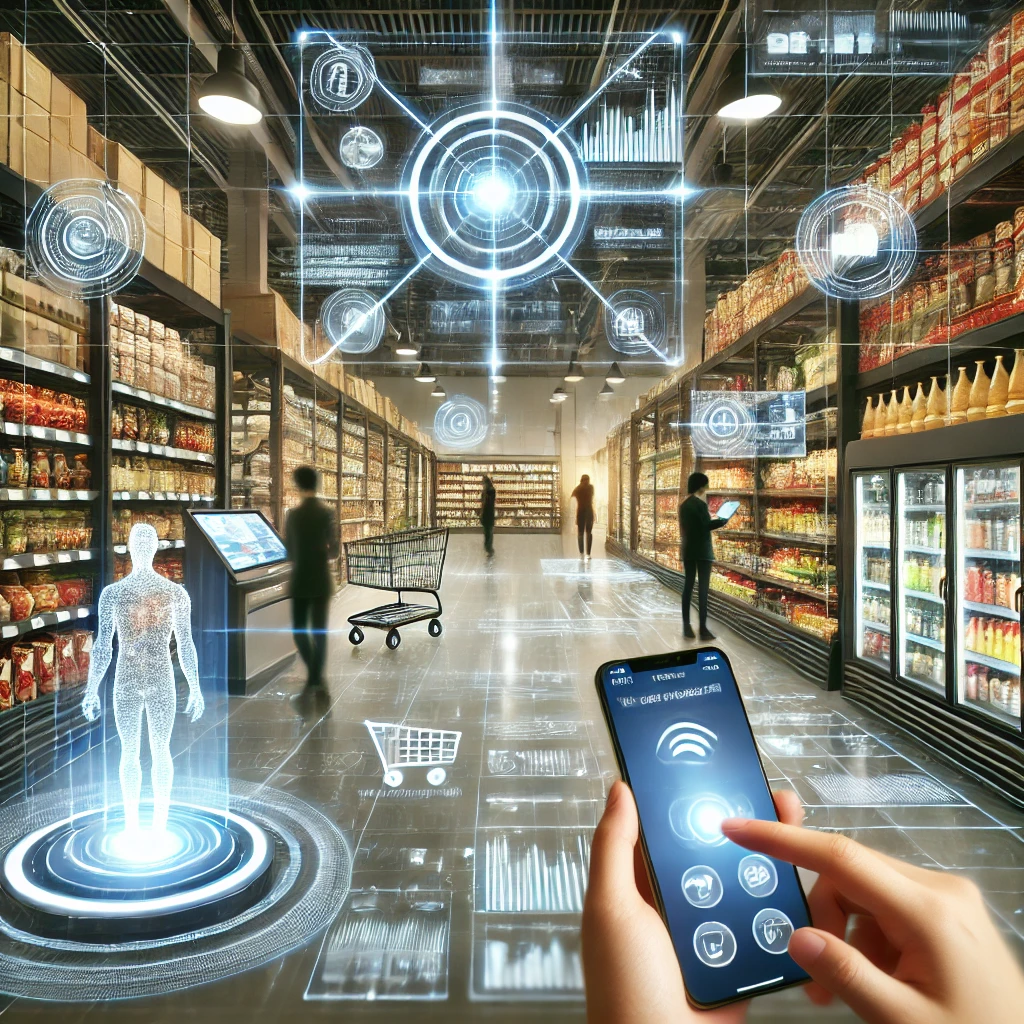Purchasing goods in bulk, stocking shelves, and selling to customers; this is how supermarkets used to operate as they were using a traditional product-based business model. Over time, supermarkets evolved by integrating technology, such as self-service, price scanners, and loyalty programs (Sundarabharathi & Muthulakshmi, 2023). The landscape is changing rapidly as supermarkets shift toward a digital platform business model. This shift focuses on personalized experiences, with data analytics predicting consumer behavior and adapting to innovations (Sundarabharathi & Muthulakshmi, 2023). One key player embracing this transformation is Albert Heijn, a Dutch supermarket chain leading the way in digital innovation.
Albert Heijn was the first Dutch supermarket who took the omnichannel approach where in-store meets online (Albert Heijn Launches Subscription, ‘My Albert Heijn Premium’, 2021). The introduction of digital tools, like Albert Heijn’s bonus card and mobile app “AH app”, have transformed the way customers interact with the brand. Their bonus card initially started as a loyalty card for discounts, but has since evolved into a sophisticated data-gathering tool. The combination of the bonus card and the multifunctional AH app, lets Albert Heijn track customers’ shopping habits. With the use of artificial intelligence, the supermarket can recommend personalized offers, recipes based on what you buy, and even predict future purchases. This personalized shopping experience keeps customers engaged while generating valuable data.
As these apps and digital tools grow in functionality, they are part of a broader trend where supermarkets collect an increasing amount of data. Every interaction, from the products scanned to online searches, feeds into algorithms that help supermarkets optimize inventory, suggest new products, and refine marketing strategies. This approach transitions supermarkets from merely being places to purchase goods to digital platforms that provide value-added services based on consumer behavior.
The future allows supermarkets to become even more platform oriented due to new technological innovations and upcoming trends. There are different opportunities around the corner for supermarkets to make this transformation. Examples are the replacement of barcodes with QR codes in 2027 in the Netherlands and Artificial Intelligence becoming more sophisticated (DigitalTrends, 2023)(NOS, 2024).
As supermarkets adopt these technologies, their business models will need to continue evolving towards more digitally-driven, data-powered operations. It is interesting to see how it affects the business models of supermarkets like Albert Heijn right now, and how it will develop in the future years. How far can we transform to this digital platform model and will the traditional physical supermarket as we know disappear completely in the future?
References:
Albert Heijn launches subscription, ‘My Albert Heijn Premium’. (2021, 27 oktober). https://www.aholddelhaize.com/en/news/albert-heijn-launches-subscription-my-albert-heijn-p
DigitalTrends. (2023, 19 juli). How Artificial intelligence (AI) is becoming increasingly sophisticated. Medium. https://medium.com/@digitaltrends1/how-artificial-intelligence-ai-is-becoming-increasingly-sophisticated-4b837f7e31ba
NOS. (2024, 26 juni). De streepjescode bestaat 50 jaar, maar het einde nadert. https://nos.nl/artikel/2526164-de-streepjescode-bestaat-50-jaar-maar-het-einde-nadert
SUNDARABHARATHI, M., & MUTHULAKSHMI, C. (2023). American Supermarkets – PAST, Present Vs. Future Trends and Technologies. In G. Venkataswamy Naidu College & Manonmaniam Sundaranar University, Res Militaris (Vol. 13, Nummer 2, pp. 6270–6271).


This article touches on such a relevant topic! During the last session dedicated to platform thinking, I remember discussing this very concept with the student sitting next to me. We were talking about how supermarkets, especially with their use of data and omnichannel strategies, are shifting toward a platform model. I’ve experienced this shift myself in Italy with the supermarket chain Esselunga. For example, the QR code scan at the entrance not only saves time by skipping checkout but also provides the supermarket with insights into our shopping habits, such as when and how often we buy groceries, how we move through the store, and patterns in our behavior that we might not even notice ourselves. This shows how technology is transforming supermarkets into more dynamic and data-driven platforms.
This is super interesting! I wonder if we will even need to create grocery lists in the future. Maybe AI can do that for us, making sure our groceries are ordered according to our needs.